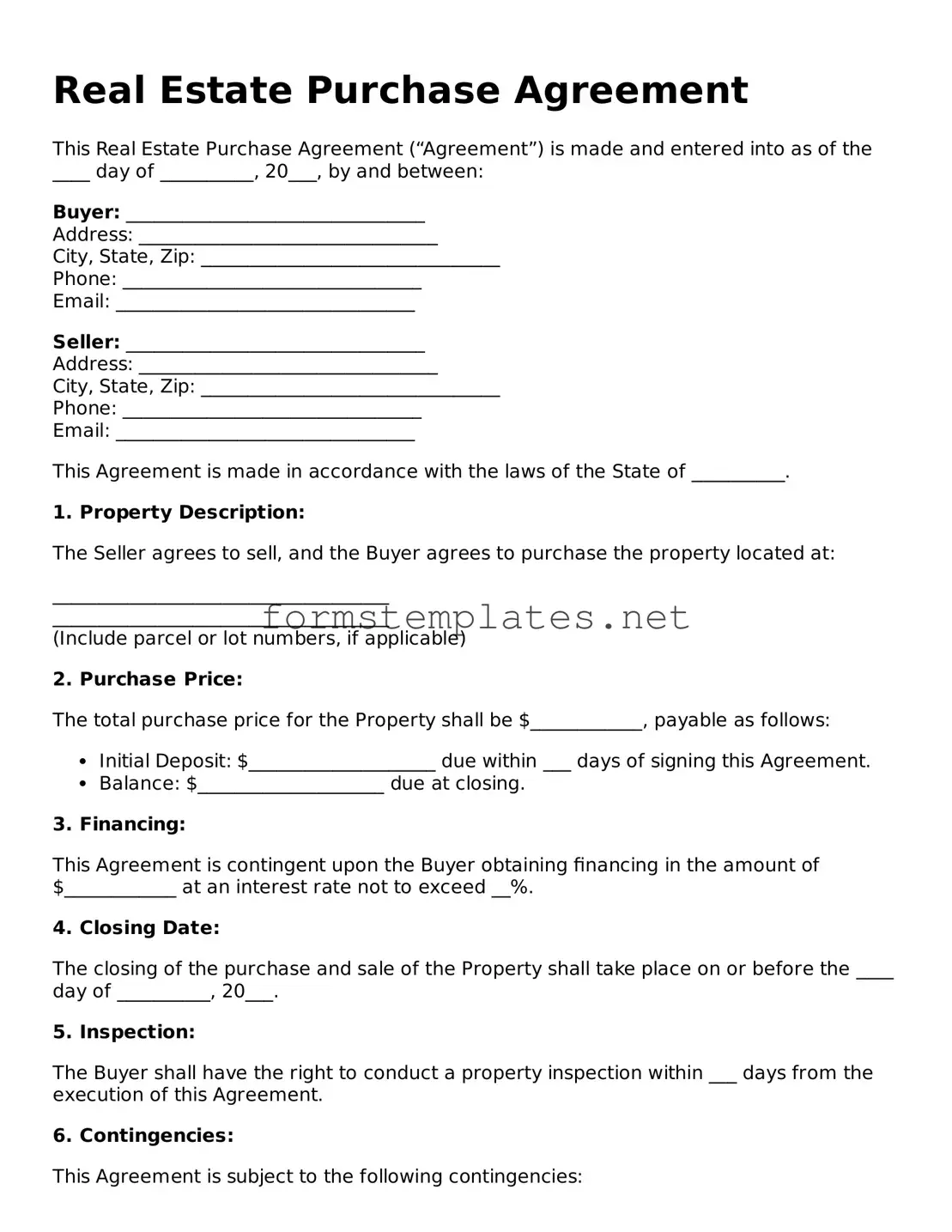Real Estate Purchase Agreement
This Real Estate Purchase Agreement (“Agreement”) is made and entered into as of the ____ day of __________, 20___, by and between:
Buyer: ________________________________
Address: ________________________________
City, State, Zip: ________________________________
Phone: ________________________________
Email: ________________________________
Seller: ________________________________
Address: ________________________________
City, State, Zip: ________________________________
Phone: ________________________________
Email: ________________________________
This Agreement is made in accordance with the laws of the State of __________.
1. Property Description:
The Seller agrees to sell, and the Buyer agrees to purchase the property located at:
____________________________________
____________________________________
(Include parcel or lot numbers, if applicable)
2. Purchase Price:
The total purchase price for the Property shall be $____________, payable as follows:
- Initial Deposit: $____________________ due within ___ days of signing this Agreement.
- Balance: $____________________ due at closing.
3. Financing:
This Agreement is contingent upon the Buyer obtaining financing in the amount of $____________ at an interest rate not to exceed __%.
4. Closing Date:
The closing of the purchase and sale of the Property shall take place on or before the ____ day of __________, 20___.
5. Inspection:
The Buyer shall have the right to conduct a property inspection within ___ days from the execution of this Agreement.
6. Contingencies:
This Agreement is subject to the following contingencies:
- Financing Approval
- Inspection Results
- Appraisal Value
7. Default:
If the Buyer fails to complete the purchase, the Seller may retain the initial deposit as liquidated damages. If the Seller fails to deliver the Property, the Buyer may recover the initial deposit plus any other legal remedies available.
8. Governing Law:
This Agreement shall be governed by and construed in accordance with the laws of the State of __________.
IN WITNESS WHEREOF, the parties hereto have executed this Real Estate Purchase Agreement as of the date first above written.
Buyer Signature: ________________________________
Date: _______________
Seller Signature: ________________________________
Date: _______________
